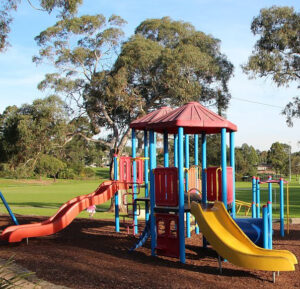For decades, planning amenities in new apartment communities was a “check-the-box” exercise, even in luxury communities. Lounge? Check. Gym? Check. Pool? Check. Simple, straightforward and, overall, nothing special.
Over the past 20 years, everything changed. The new approach was more “shock-and-awe.” Pools, lounges and gyms all got bigger and grander, and developers starting layering in everything under the sun – a sports bar, sky deck, speakeasy, smoothie bar, theater, library, coworking lounge, podcast studio, maker space, sauna, steam room, massage room, VR gaming lounge, multi-sport simulator, climbing wall, pet spa, etc., etc., etc.
It’s an expensive undertaking, both in terms of space allocated to these amenities and the cost to fit them out. And, in many instances, it’s not only unnecessary but potentially counterproductive, as residents are increasingly aware that THEY are the ones ultimately paying for access to these amenities in which they may or may not see value and as rents escalate across markets. There’s a better way.

Great amenities at RENDER Covington
Charlotte-based Crescent Communities has responded to the arms race by launching RENDER, an alternative platform to their successful NOVEL brand. Targeting more suburban locations and renters seeking a balance of luxury and affordability, RENDER’s platform is focused on providing high-quality homes with an amenity set that is “right-sized” for the audience and price point. Each RENDER community also pays attention to its local context and specific audience.
“Our focus is on including the exact right mix and quality of amenities that we believe residents will value most and not trying to pack in everything that will drive up cost and may not drive additional revenue,” explains Eric Liebendorfer, the Crescent Communities development director leading the company’s RENDER Covington Project southeast of Atlanta. “Since opening in October 2023, we have seen fantastic results, both in terms of rate and absorption.”
In the Northeast, Elevate faced a different challenge – repositioning a high-value tower sandwiched between Boston and Cambridge, overlooking the Charles River. After studying luxury rental resident preferences among an abundance of new competitors, Red Propeller and the community team elected to eliminate an existing pool and consolidate fragmented coworking, lounge, and convenience-retail amenities into a smaller, more focused set of offerings that proved memorable on the sales path and routinely useful for residents. Investing in better instead of more meant every feature could stand out. And, in this situation, right-sizing the amenity collection didn’t mean lowering rents.
“Why would we recommend continuing to operate a pool in a three-month pool climate when we could redeploy the dollars and square footage to best-in-class solutions for the spaces residents are willing to pay for?” asks Zach Bracken, senior director of renovations and redevelopment for Elevate. “Choosing to ignore the industry pull for more and more in favor of fewer and better has made sales at Elevate less salesy and more trustworthy. The market response speaks for itself.”

Old pool and new fitness center at Elevate
What are the lessons here?
Know your audience
As anyone who has worked with Red Propeller knows, one of our foundational beliefs is that it’s much better to be perfect for a select group of people than to be OK for everyone. Amenities, of course, are part of being perfect for your audience, so you have to start your amenity planning by defining your audience.
People have differing tastes and interests based on age (young adult, maturing, middle age, etc.), life stage (singles, couples, families, empty nesters, etc.), and a range of psychographic factors (urban people versus suburban/exurban people, partiers versus quiet people, casual versus buttoned-up people, foodies, gearheads, sports fans, etc.).
Know what your audience wants

Playgrounds are for family-oriented communities
Getting amenities right is about curation. It’s not that a podcast studio, maker space, speakeasy, or VR gaming lounge is never a good idea. Rather, it’s a question of knowing what the target audience for a specific community will value. We all already know this to a certain extent – we generally wouldn’t put a playground in a community that would not attract a family audience or a speakeasy in a family-focused suburban community. Apply such thinking to every amenity and feature.
The need to curate has become even more important with the emergence of Gen Z as a primary audience for multifamily communities. Many Millennials were wowed by “stationary-cruise-ship” communities that offered a smorgasbord of amenities. Shock and awe worked for them. Gen Z tends to be more practical and pragmatic. They recognize that amenities have costs, and they don’t want to pay for stuff they don’t expect to use. (See more in our previous post about Gen Z.)
This is also about knowing which spaces and features will move the needle the most for your target audience. After all, it’s more important than ever to be able to prioritize, given high land costs, high construction costs, and high interest rates.
Focus on great spaces, not more spaces
More than once, we’ve visited an apartment community that has a wonderful elevated lounge, with tons of light and magnificent views, and also a ground-floor coworking space, sometimes with no windows at all or just a window into the adjacent corridor. Where would you rather work?

Where would you rather work?
That’s just a long-winded way of saying that people will want to hang out in the best spaces in a community, no matter what they’re doing. If they’re trying to get work done in the middle of a lively lounge, well, that’s what noise-cancelling headphones are for.
Create amenities in prime locations and then design those spaces to accommodate multiple uses. Outfit that rooftop lounge with a private work pod or two, for when people need to take a call or meeting, and a large table that’s good for working, meeting, playing board games, or dining, potentially in a space that can be separated from or opened to the main lounge with a sliding glass wall. Create a “mud” room with a washing station that can accommodate dogs, bikes, and other gear, and a work table and tools for maintenance and repair of bikes/gear and “maker” activities (assuming your target audience is into such things).
Provide ample, thoughtful programming
Remember that part about people preferring to work in rooftop lounges over ground-floor coworking spaces?

People like to be around people
Part of the reason for that is light and views. Another big part is that people generally like to be around other people, in a center of life and energy. It’s why remote professionals who have perfectly good wifi at home hang out with their laptops at their local coffee shop. Thoughtfully designed amenity spaces will naturally draw residents in. But it remains important to generate life and energy with a thoughtful program of community offerings and activities.
Programming is one area where the old check-the-box approach is still all too prevalent. Taco Tuesday, Wine Down Wednesday, and Sunday Funday have become predictable and stale … and not always relevant to residents’ desires. As with amenity spaces, it’s not necessarily about having the most or most varied programming. Rather, it’s important to provide regular programming that’s tailored to the interests of your audience.
Tailoring your amenity program and accompanying activation of amenities through programming creates ongoing energy. Energy attracts people and creates a sense of place.
Ultimately, there’s no one right answer, no singular perfect mix of amenities and programming. Every market, audience, and product type will demand a tailored, curated solution. And that takes work and insight. You know where this is going, right? This is what we do! Want help figuring out who your audience is and just what they want? We’d love to hear from you.